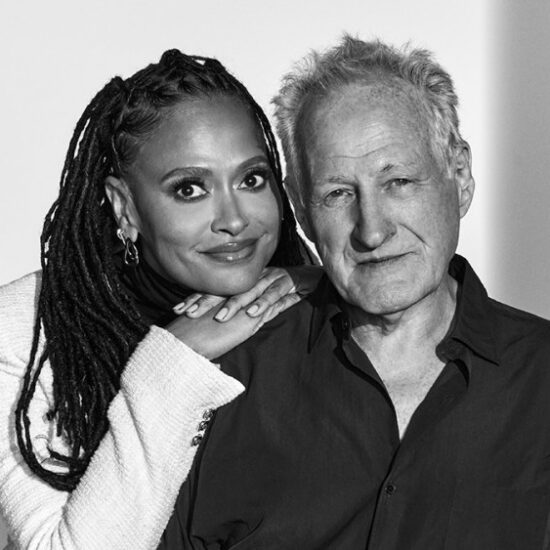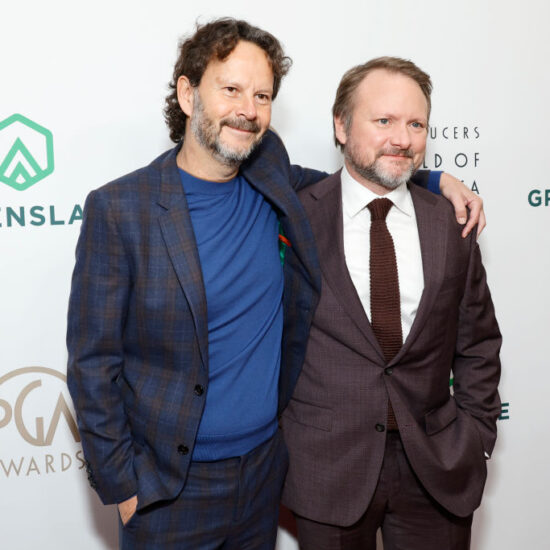
One does not simply build Mordor. It takes weeks of preparation, countless extras, days of shooting, 9,000 visual effects, several real, exploding geysers and meticulous shot planning and sound mixing.
But before the Amazon series “Lord of the Rings: The Rings of Power” crew could really go full-Mordor destruction, they needed to shrink everything down to a singular point of view with the show’s hero, Galadriel (played by Morfydd Clark).
Attentive viewers noticed Mount Doom’s destructive climax, complete with a storm cloud sweeping across land, was reflected in the elf warrior’s face, a threat she met head-on, eyes open. “When you watch the series in a row, Episode 6 ends with Galadriel’s perspective and Episode 7 starts with Galadriel’s perspective,” “Rings of Power” sound editor Robbie Stambler explained. “You’re completely in her head for it happening and then the aftermath and the wake-up.”
“We knew that we wanted to start Episode 7 with her waking up in the hellscape that we created, it was important for us to bookend with her,” cinematographer Alex Disenhof said, revealing that this idea originated from Charlotte Brändström, the director of Episodes 6 and 7.
“I always find it important to shoot a scene through somebody’s POV,” Brändström explained. “Whenever I get a script or a scene, I look at perspective. It gives a point of view for the audience to identify with…it had to become Galadriel’s point of view because she’s sort of the red thread all season. She’s so badass and she’s our warrior, so we had to be her.”
Director Brändström, cinematographer Disenhof, VFX producer Ron Ames and supervising sound editor Stambler sat down for Variety’s “Making a Scene” series, presented by HBO, to unveil all the work that went into creating Mordor, “Lord of the Rings” author J. R. R. Tolkien’s realm of evil and future home of villain Sauron.
The importance of these two episodes was not lost on the crew. “Very early on when we were talking about this particular episode, we knew that we were coming to Mount Doom,” Ames said. “Throughout all of it, [VFX Supervisor] Jason Smith and I would listen and the writers and creators would tell us their idea and then we’d go in the other room and go, ‘Oh my God, how are we going to do this?’”
First and foremost, the crew would need to map out an entire blueprint of how everything was being built. “There was this key that we had been teasing throughout Season 1, this broken sword,” said Disenhof. “By putting it in this stone and turning, it would essentially unlock the dams that would then allow the water to flow underground into these tunnels…under the village all the way to the mountain, hitting the magma lava and causing the explosion, which is loosely based on real science and how it would cause something like that.”
“There was no part of this that we allowed to not be connected to true physics,” Ames agreed. “We designed roughly what that machine was going to do and be, and it was a waterworks, basically a dam that had been built in and disguised into the side of the mountain, looked like a small waterfall.”
The fact that this disaster is unleashed on the Númenorean warriors and Southland people in the middle of the day was all intentional. “They had won the battle, they felt they were out of it,” said Brändström. “They felt that they were safe, everything was good. And that’s why I feel like it was such a surprise and so strong at the end of that episode because… it was completely unexpected when the water started spurting.”
The geysers themselves were all practical on set, but due to the tight shooting schedule the extras only had a couple takes to get soaked (the team couldn’t keep drying them off) but it was impossible to get that visceral reaction and that wet look without creating the effect in real life. As for the lava, Stambler incorporated the sound of a wet sponge on a hot fryer.
The details behind this expansive, multi-episode sequence is impressive, watch the full conversation about the making of Mordor above.













